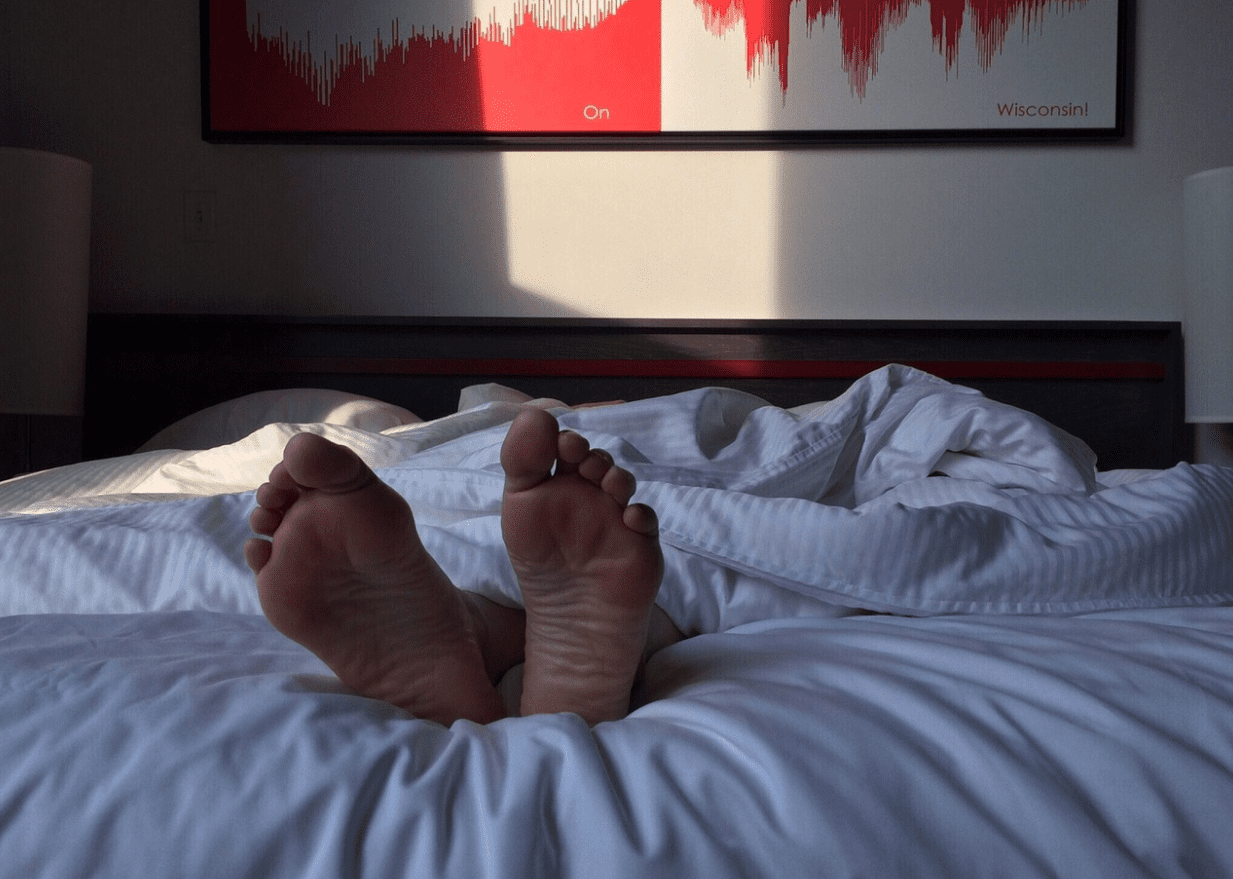Getting a good night’s sleep is vital, but did you know that your sleeping position could be the key to unlocking the ultimate body rest? Whether you naturally sleep on your back, side, or stomach, the position you choose can have a lasting impact on your overall health.
It can affect your cardiovascular health, digestion, and even your skin in many ways. For example, sleeping on your left side can help improve blood flow to the heart, while sleeping on the stomach can put pressure on the abdomen. The latter may disrupt digestion and increase the likelihood of acid reflux or heartburn.
Additionally, your chosen position can influence the development of wrinkles and facial lines.
With various factors to consider—such as comfort, age, health conditions, and even snoring—finding the ideal sleeping position can be a game-changer.
What is the Ideal Sleeping Position Therefore?

The truth is, sleeping in general is not relative. A 2016 article in Sleep Health highlights that the ideal sleeping position varies based on individual preferences. The study found that adults typically shift positions between 11 and 45 times throughout the night. Most often, this happens subconsciously.
Nonetheless, a conscious selection of your preferred sleeping position can be a game changer.
Let us explore these positions:
1. Sleeping on Your Back (Supine Position)
Sleeping on your back, also known as the supine position, is often recommended by many as one of the best positions for spinal alignment. When lying on your back, your head, neck, and spine remain in a neutral position, which reduces pressure on those areas and helps prevent pain. This position also minimizes wrinkles since your face is not pressed against the pillow or mattress.
However, back sleeping isn’t ideal for everyone.
People who suffer from sleep apnea or snoring may find that these conditions worsen their situations. Gravity can cause the tongue to fall back into the throat. This may narrow the airway, and make breathing more difficult. As a result, one may experience disrupted sleep, daytime fatigue, and other health challenges.
If you are struggling with sleep apnea or snoring, it is important to consult with a healthcare professional to discuss potential treatments and alternative sleeping positions. They may recommend using a CPAP machine or pillows designed to help keep your airway open.
Benefits of Supine Position:
- May help prevent wrinkles.
- Can reduce back pain.
- May alleviate snoring and sleep apnea.
Drawbacks:
- Can lead to lower back pain, especially if you don’t have proper support.
2. Sleeping on Your Side (Left or Right)

Side sleeping is the most popular sleep position and has several health benefits, especially when done correctly.
Here is a closer look at each side:
> Left Side:
Sleeping on your left side is often recommended for pregnant women and individuals with digestive issues. This position can help reduce acid reflux and heartburn by keeping the stomach below the esophagus. This allows gravity to do its job.
Additionally, left-side sleeping promotes better blood flow to the heart, which is particularly beneficial for pregnant women as it improves circulation to the fetus. This increased blood flow can help ensure the baby receives adequate oxygen and nutrients.
> Right Side:
While sleeping on the right side also has benefits, it may exacerbate heartburn in some people due to the position of the stomach relative to the esophagus. However, for most individuals, sleeping on either side can help alleviate issues like snoring, reduce back pain, and improve digestion.
If you are experiencing heartburn or other digestive problems, it is a good idea to experiment with different sleeping positions to see what works best for you.
Ultimately, the best position for you will depend on your individual needs and preferences. It is important to find a position that allows you to sleep comfortably and get a restful night’s sleep.
Benefits of Sleeping on the Sides:
- Reduces acid reflux.
- May alleviate snoring.
- Can help prevent wrinkles.
- Supports healthy spinal alignment.
Downsides of Sleeping on the Sides
- Shoulder and Hip Pain: Pressure points on the shoulder and hip.
- Wrinkles and Skin Aging: Facial compression leading to wrinkles.
- Nerve Compression: Potential for numbness or tingling in arms or legs.
- Uneven Spine Alignment: Risk of spinal misalignment without proper support.
- Restricted Breathing: Possible impact on breathing if not properly supported.
- Acid Reflux (Right Side): Increased risk of acid reflux when sleeping on the right side.
Best Side Between ‘Left’ and ‘Right’:
- Sleeping on your left side is often recommended for heart health, as it allows the heart to drain waste more efficiently.
3. Sleeping on Your Stomach (Prone Position)

Sleeping on your stomach, or the prone position, is generally considered the least healthy option. While it can help reduce snoring by keeping the airway more open, it often leads to misalignment of the spine.
Since the head is usually turned to one side for breathing, this position can strain the neck and lead to discomfort or pain. Additionally, sleeping on your stomach can put pressure on internal organs, such as the lungs and liver, and may contribute to facial wrinkles over time as your face is pressed against the pillow.
If you are a stomach sleeper, it is important to try to transition to a different sleeping position gradually. Start by placing a pillow under your hips to help align your spine. You may also want to consider using a body pillow to support your back and prevent twisting.
Over time, you may find that you are able to transition to a side or back sleeping position, which are generally considered healthier options.
Disadvantages of Sleeping on the Stomach:
- Neck Pain: Turning your head to the side can strain the neck muscles and lead to discomfort or pain.
- Back Pain: The spine may be forced into an unnatural position, leading to lower back pain due to the lack of proper spinal alignment.
- Pressure on Internal Organs: Increased pressure on the abdomen can cause discomfort and potentially affect digestion.
- Facial Wrinkles: Continuous pressure on the face can contribute to the development of wrinkles and facial lines.
- Nerve Compression: May cause numbness or tingling in the arms or legs due to nerve compression from lying flat on the stomach.
Advantages:
- Reduces Snoring: Sleeping on the stomach can help keep the airways open, reducing snoring and mild cases of sleep apnea.
- Less Acid Reflux: This position can sometimes reduce symptoms of acid reflux, as gravity helps keep stomach acid down.
- Comfort for Some People: For some, sleeping on the stomach feels more comfortable and may help them fall asleep faster.
- Less Facial Wrinkles: While there’s a risk of wrinkles from facial compression, stomach sleeping avoids the direct pressure on the sides of the face that can occur with side sleeping.
- Relieves Pressure on the Lower Back: Some individuals find that sleeping on their stomach alleviates pressure on the lower back, especially if they have a softer mattress.
The Verdict: Which Position is Best for You and Your Family?

Choosing the right sleeping position can significantly impact your overall health and well-being. While personal preference often plays a role, there are scientific reasons behind certain positions being more beneficial than others.
1. Back Sleeping:
- Benefits: Can help maintain spinal alignment, reduce neck and back pain, and minimize facial wrinkles.
- Drawbacks: May exacerbate snoring and sleep apnea due to gravity causing the tongue to fall back into the throat.
2. Side Sleeping:
- Benefits: Can help alleviate acid reflux, snoring, and back pain. Promotes better blood flow to the heart, especially beneficial for pregnant women.
- Drawbacks: May cause shoulder pain or discomfort if not supported properly.
3. Stomach Sleeping:
- Benefits: Can help reduce snoring by keeping the airway open.
- Drawbacks: Can strain the neck and back, put pressure on internal organs, and contribute to facial wrinkles.
Factors to Consider:
- Medical Conditions: Individuals with sleep apnea, heart disease, or back pain may benefit from specific sleeping positions.
- Pregnancy: Pregnant women are often advised to sleep on their left side to improve blood flow to the placenta.
- Personal Preference: Ultimately, the best sleeping position is one that you find comfortable and allows you to sleep soundly.
Tips for a Good Night’s Sleep:

- Invest in a Quality Mattress and Pillow: Ensure they provide adequate support for your body.
- Create a Relaxing Sleep Environment: Keep your bedroom cool, dark, and quiet.
- Establish a Consistent Sleep Schedule: Try to go to bed and wake up at the same time each day.
- Limit Screen Time Before Bed: The blue light emitted by screens can interfere with sleep.
By understanding the pros and cons of different sleeping positions and making informed choices, you can improve your overall health and well-being.





Leave a Reply